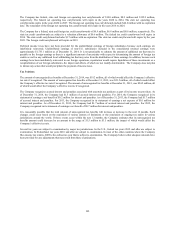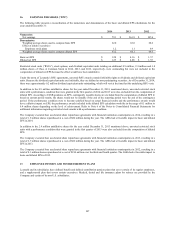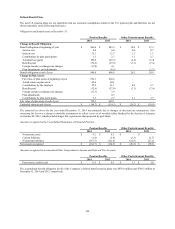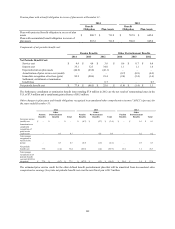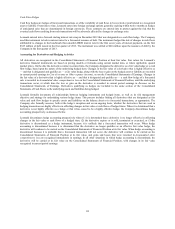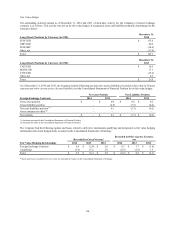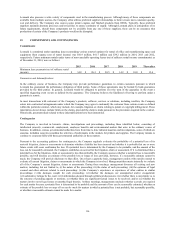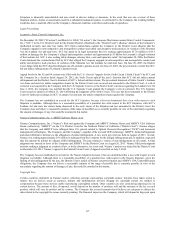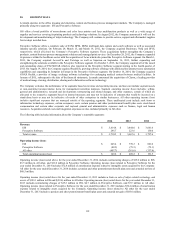Lexmark 2014 Annual Report Download - page 116
Download and view the complete annual report
Please find page 116 of the 2014 Lexmark annual report below. You can navigate through the pages in the report by either clicking on the pages listed below, or by using the keyword search tool below to find specific information within the annual report.
Defined Contribution Plans
Lexmark also sponsors defined contribution plans for employees in certain countries. Company contributions are generally based upon
a percentage of employees’ contributions. The Company’s expense under these plans was $28.8 million, $28.3 million and
$26.0 million in 2014, 2013 and 2012, respectively.
Additional Information
Other postretirement benefits:
No health care cost trend rates were assumed for the 2014 postretirement plan liabilities. This was based on the actual spend rate
experience of retirees and preset caps having been met for the net employer cost of postretirement medical benefits.
Related to Lexmark’s acquisition of the Information Products Corporation from IBM in 1991, IBM agreed to pay for its pro rata share
(currently estimated at $11.9 million) of future postretirement benefits for all the Company’s U.S. employees based on prorated years
of service with IBM and the Company.
Cash flows:
In 2015, the Company is currently expecting to contribute approximately $15 million to its pension and other postretirement plans.
Lexmark estimates that the future benefits payable for the pension and other postretirement plans are as follows:
Pension
Benefits
Other
Postretirement
Benefits
2015 $ 49.2 $ 3.3
2016 48.9 3.1
2017 48.3 3.0
2018 48.2 2.9
2019 48.4 2.7
2020-2024 243.6 10.5
18. DERIVATIVES AND RISK MANAGEMENT
Derivative Instruments and Hedging Activities
Lexmark’s activities expose it to a variety of market risks, including the effects of changes in foreign currency exchange rates and
interest rates. The Company’s risk management program seeks to reduce the potentially adverse effects that market risks may have on
its operating results.
Lexmark maintains a foreign currency risk management strategy that uses derivative instruments to protect its interests from
unanticipated fluctuations in earnings caused by volatility in currency exchange rates. The Company does not hold or issue financial
instruments for trading purposes nor does it hold or issue leveraged derivative instruments. Lexmark maintains an interest rate risk
management strategy that may, from time to time use derivative instruments to minimize significant, unanticipated earnings
fluctuations caused by interest rate volatility. By using derivative financial instruments to hedge exposures to changes in exchange
rates and interest rates, the Company exposes itself to credit risk and market risk. Lexmark manages exposure to counterparty credit
risk by entering into derivative financial instruments with highly rated institutions that can be expected to fully perform under the
terms of the agreement. Market risk is the adverse effect on the value of a financial instrument that results from a change in currency
exchange rates or interest rates. The Company manages exposure to market risk associated with interest rate and foreign exchange
contracts by establishing and monitoring parameters that limit the types and degree of market risk that may be undertaken.
Fair Value Hedges
Lexmark uses fair value hedges to reduce the potentially adverse effects that market volatility may have on its operating results. Fair
value hedges are hedges of recognized assets or liabilities. Lexmark enters into forward exchange contracts to hedge accounts
receivable, accounts payable and other monetary assets and liabilities. The forward contracts used in this program generally mature in
three months or less, consistent with the underlying asset or liability. Foreign exchange forward contracts may be used as fair value
hedges in situations where derivative instruments expose earnings to further changes in exchange rates.
112


